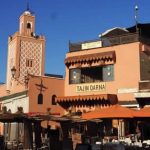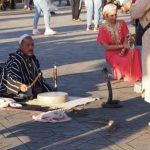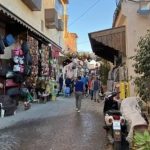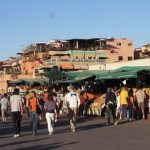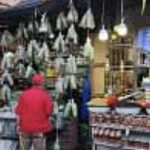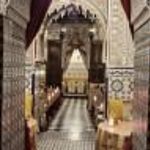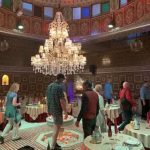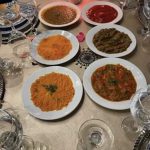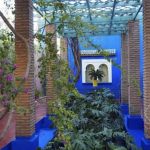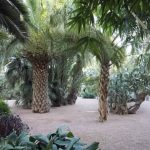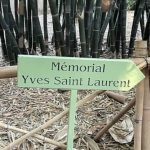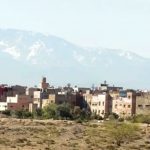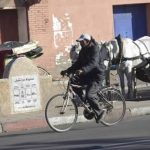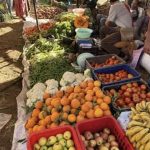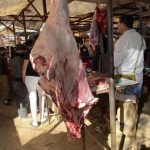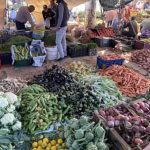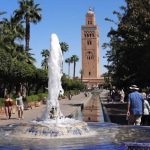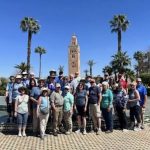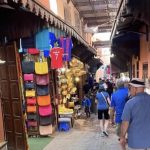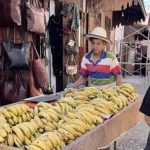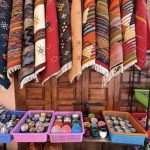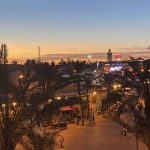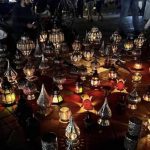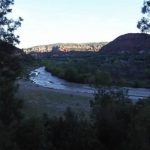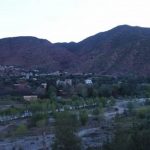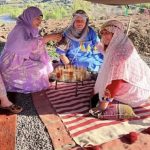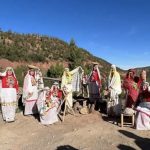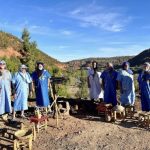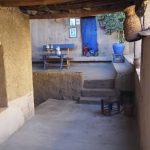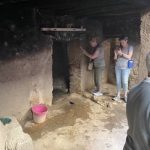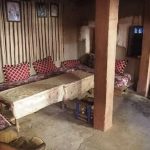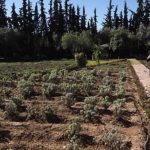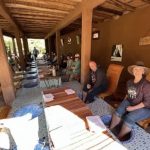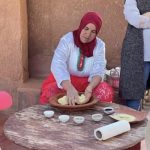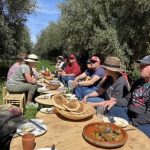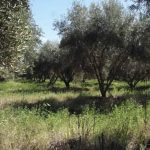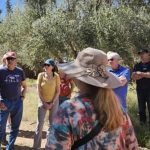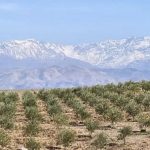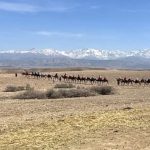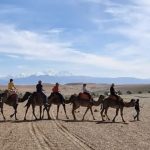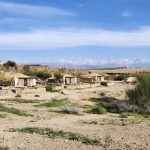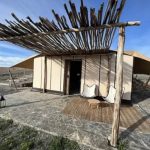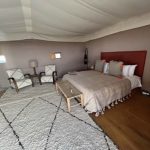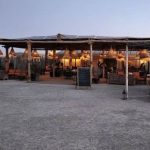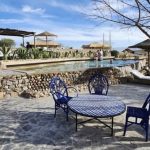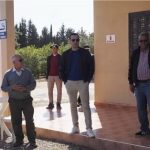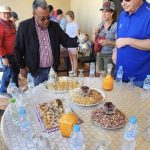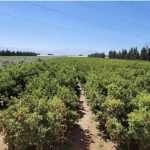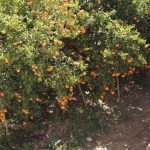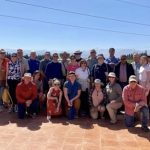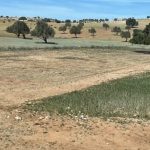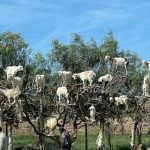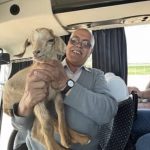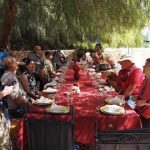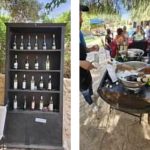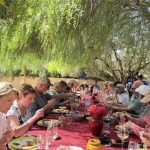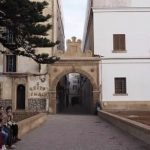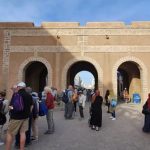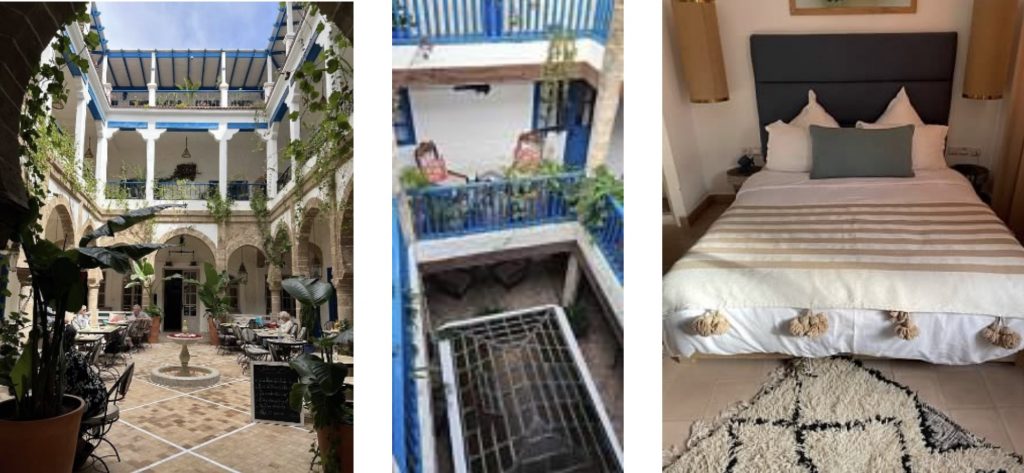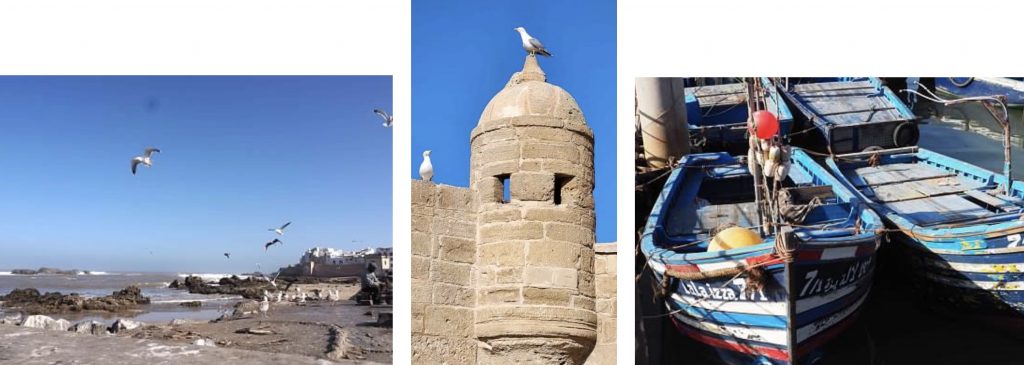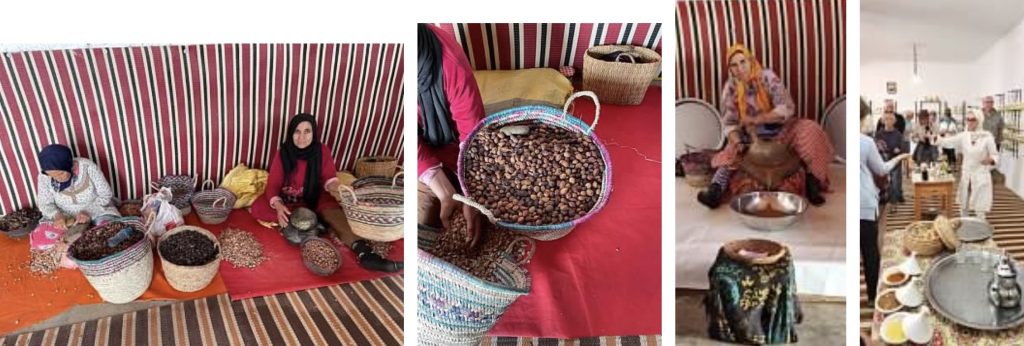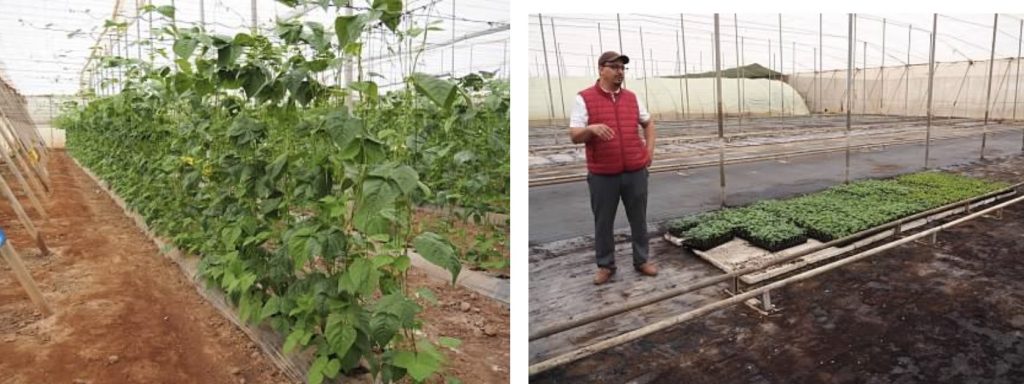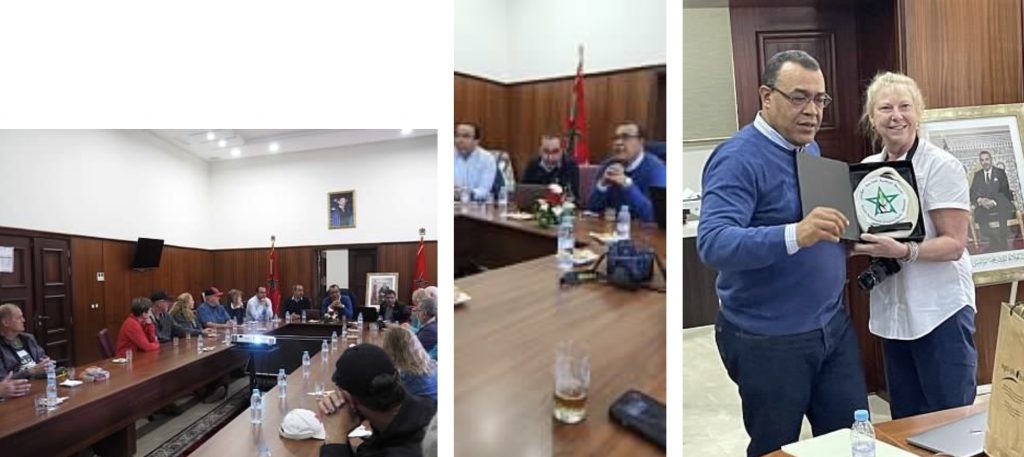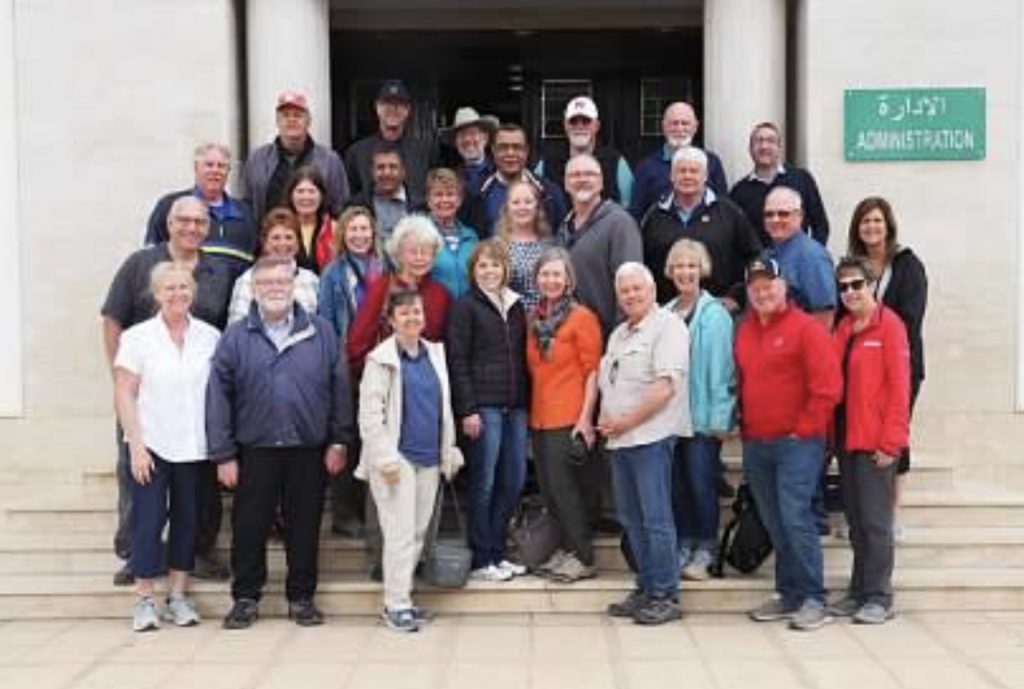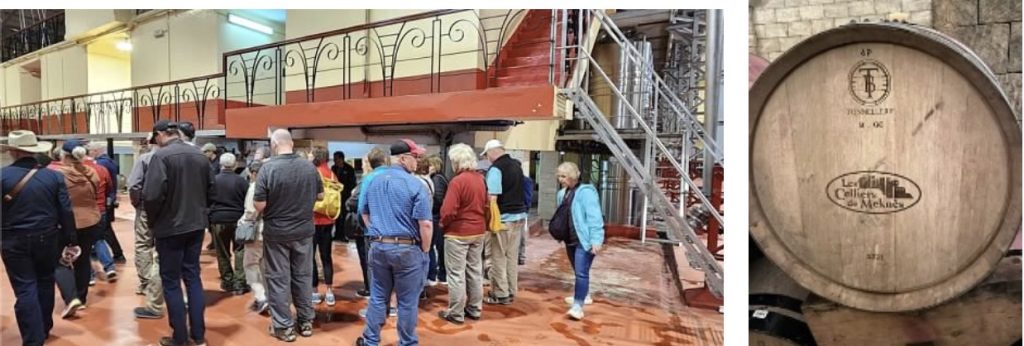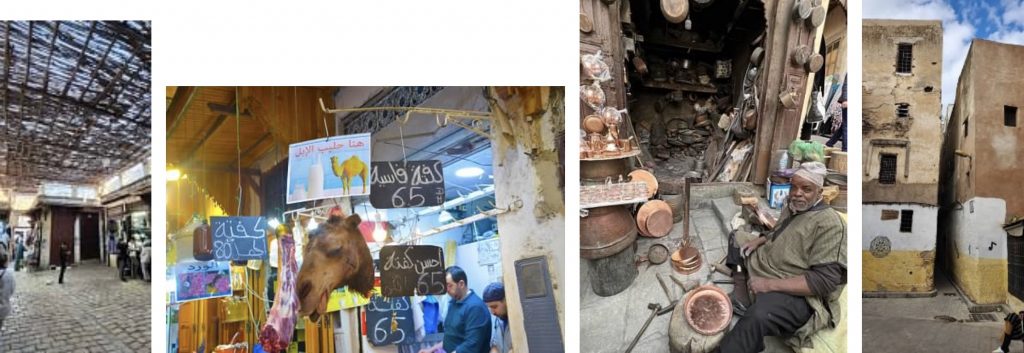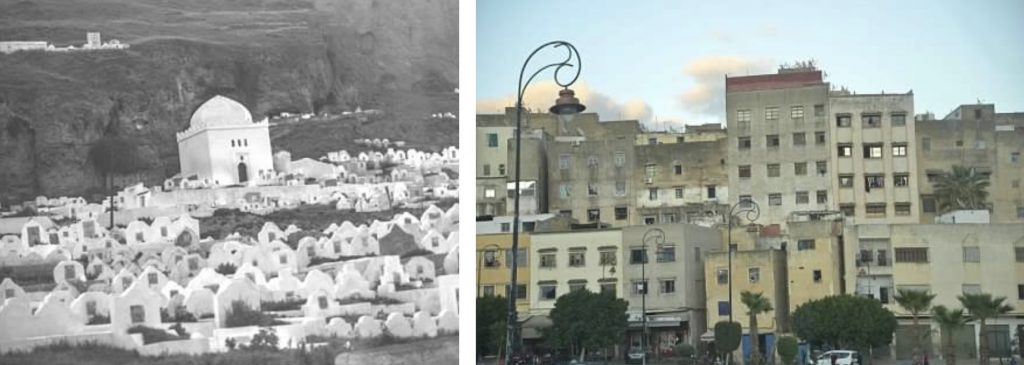Friday, March 10, 2023
We departed at different times, different flights and different routes. We all arrived in Marrakech on Saturday, March 11th. After clearing customs and gathering our bags (some bags arriving later than expected), we checked into the Savoy Le Grand Hotel.
We visited the famous main square of Marrakech, Jamaa el Fna. Jemaa el Fna has been the nerve center of Marrakech where medieval and modern mix comfortably on a daily basis to play host to an alluring and fascinating sensory spectacle.
A visit to Jemaa el Fna is one of the most incredible travel experiences in the world and a must for all cultural travelers.
Being the soul and living legacy of Moroccos oral tradition, Jemaa el Fna square was proclaimed by UNESCO as a Masterpiece of the Oral and Intangible Heritage of Humanity in 2001. This goes well with the fact that the Medina of Marrakech has been a UNESCO World Heritage Site since 1985.
Located in the heart of the old Medina of Marrakech, Dar Essalam restaurant is an old ancestral palace of 17th century which has been renovated in the pure Moroccan style, to offer an original and authentic experience that combines tradition and modernity in a special way.
From the 17th century, it is the oldest lounge and the most refined one, its traditional Moroccan architecture makes it exceptional. Berber music show and belly dancing. Very fun.
Famous botanical gardens of the Yves Saint Laurent Museum and Jardin Majorelle. The garden spreads over 12 acres and is one of the most enchanting and mystical gardens in Morocco. Majorelle Garden has given the world its own vibrant and distinctive color: Majorelle blue. The intense cobalt accents the buildings, fountains, and edges of the garden. In 1980 Yves Saint Laurent bought the Garden to save it from destruction.
We left the city of Marrakech and drove to visit a weekly traditional cattle market with sheep, goats, chickens, fruits, vegetables, and much more.
After lunch at Rotisserie de la Paix, we continued to visit historical Marrakech through the narrow paths of the souks, including a visit to a palace, Jewish quarter, leather market, and more.
Nighttime views of historic square, Jamaa el Fna. Rooftop dinner at Kozy Bar.
Monday, March 13th
We packed up and left Marrakech this morning heading toward the Atlas Mountains. The high Atlas Mountains and the Ourika Valley.
The Ourika River flows through the valley and there are many villages inhabited by Berber tribes. The Berbers have lived in North Africa for 5,000 years. During the Arab invasion in the 7th century, the Berbers took refuge high in the Atlas Mountains. Today most Berbers are Muslims, but they have retained the Berber languages in their villages.
We spent time with 3 young Berber entrepreneurs. Their business was providing authentic Berber dress for tourists. Quite an experience for us.
Visit to a traditional Berber home. Livestock housed on the main floor. Living spaces on the upper floors. Berber families live together, parents, children & grandchildren. Usually, Berber women marry at age 15, and men at 16. Berber villages have their own laws and work together as a cooperative. All crops, honey, clover, cherries, mint, etc., and crafts, pottery and rugs are shared with all families, and they sell the remaining for money to maintain water canals for the village. This Berber village has approximately 800 persons living in it.
A visit to Le Jardin Bio Aromatique de l’Ourika for a foot bath, tour of the gardens and a bread making demonstration. At Le Jardin, you can discover the richness of the botany of Morocco, through the fifty or so aromatic, medicinal and ornamental plants that are cultivated there. We had the opportunity to have a footbath with Nectarome bath salts flavored with the essential oil of Bitter Orange.
Farm tour and farm to table lunch at Tori Suzuki’s sustainable farm. Tori is American-French-Japanese. He is part of the permaculture – sustainable movement in Morocco. Tori purchased the farm 3 years ago. He has 2 hectares of Olive trees, 3 varieties, and has planted 400 fruit trees in between. He uses gravity irrigation between the trees, using a 64 meter deep well. Harvest for the extra green olive oil is September and October. Harvest is by hand, laying a tarp in the ground and shaking the olive trees. Tori hires help during the harvest season. It takes 3 days from harvest to press for the olives. He sells under his own label at markets and events in Marrakech.
We continued our travels to the desert camp, “Caravan by Habitas Agafay”, located in the stony desert of Agafay, bordered by the Atlas Mountains.
The views were incredible!
Bucket List filled!! We had the opportunity to take a stroll on the back of a camel. For about an hour, we trekked through the stony Agafay desert. Our dromedaries led us with the greatest of ease up on heights offering panoramic views of the beautiful landscape.
Caravan by Habitas Agafay offers visitors the desert experience differently. We stayed in unusual accommodations and enjoyed the magical surroundings.
Our tents were a combination of tradition and modernity, inspired by the tent of the nomads of the Atlas and the Sahara. The lodges were charming and comfortable. What an experience.
Caravan by Habitas Agafay at night.
Photo – Jan Bostleman
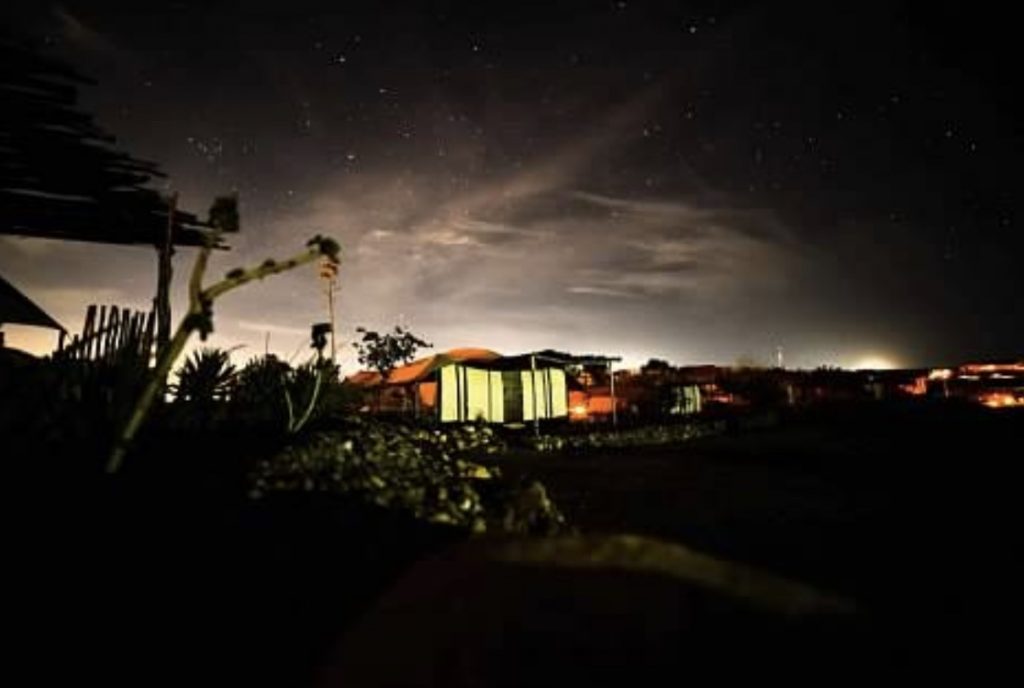
Tuesday, March 14th
Today we visited a high-tech citrus farm owned by the Delassus Group, which is owned by one family. They farm all throughout Morocco, exporting 50,000 ton per year, with the UK being their largest market.
Delassus Group is certified for Olives, Citrus and Vegetables, for production and packaging. The citrus trees are planted 4 years before harvest. Year 5 is the highest producer. Trees produce for a minimum of 15 years.
Drip irrigation is used for the olive and fruit trees, with a well depth of 120 – 170 meters. Water is scarce in Morocco. There is also a holding pond for water as well.
Olive trees produce olives for oil. The blend Black, green and purple olives to make their oils. This farm has 12 permanent employees and up to 200 seasonal workers.
The goats would climb the trees, eat the fruit off the nuts, leaving the nuts on the ground for harvesting and making oil.
Winery Val d’Argan for lunch and wine tasting under the olive trees. Traditional Moroccan dishes adapted to the tasting wines. Val d’Argan is a 52-hectare vineyard and they don’t use tractors in the vineyard, they use camels. The annual production 200,000 bottles, stored in their cellar in Essaouira, Morocco.
We arrived in Essaouira, a laid-back coastal town on the Atlantic Ocean. Essaouira is very much a working port and a fishing town. From its sublime white architecture decked out with cobalt window shutters to its winding narrow lanes, the old town still retains part of its original construction dating back to the 18th century.
We checked into Riad al Madina, our home for 2 nights. Our riad, a bed and breakfast in a traditional Moroccan and Andalusian house, with an interior garden, rooftop terrace, exquisite tile and handwork detail. Our riad has three stories and no elevators, located right in the medina.
Wednesday, March 15th
We took a walking tour of Essaouira and the port. The first thing you detect at the port is the cool air mixed with the smells of fresh fish.
The unique scenery is composed of the prevalent blue fishing boats on the shoreline of the Atlantic Sea, and the soaring white seabirds waiting to catch their next meal.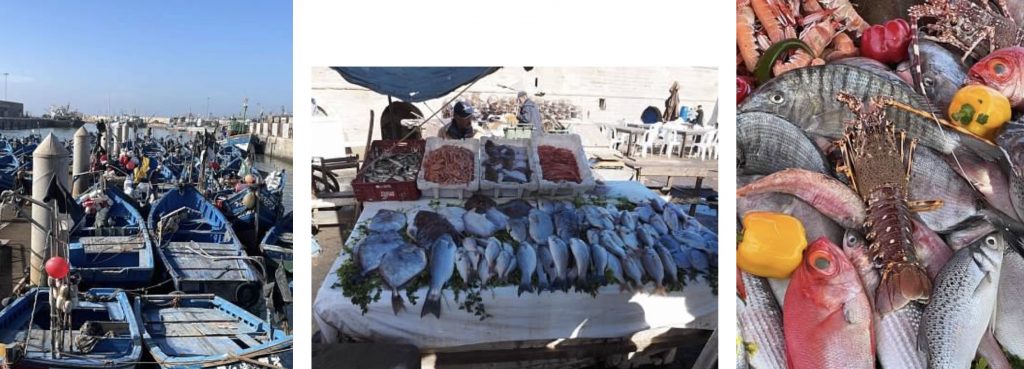
Surrounded by dramatic, wave-lashed ramparts, the narrow streets, hassle-free souks, street vendors and vibrant galleries of Essaouira’s walled medina make it a wonderful place to stroll. Dating from the late 18th century and added to UNESCO’s World Heritage list in 2001.
Dinner at Chez Sam seafood restaurant. Last evening in Essaouira.
Thursday, March 16th
We left Essaouria , driving North along the coast toward Agadir. We stopped at the oldest women’s cooperative for argon oil production. Cooperative Marjana. It was created as part of the national program to improve the socioeconomic development of rural women. The majority of the women were divorced and looking for a way to support their families.
We were shown various processes that it takes to create argon oil, both for beauty and for cooking. We were able to purchase the finished argon products.
Agadir is a major urban city in Morocco, on the shore of the Atlantic Ocean near the foot of the Atlas Mountains. The city was destroyed by an earthquake in 1960; it has been completely rebuilt with mandatory seismic standards. It is now the largest seaside resort in Morocco.
Our 2-night home, Sofitel Agadir Thalassa Sea and Spa. This luxurious resort includes 49 suites on a private beach, for a relaxing lavish stay in Agadir.
Friday, March 17th
Quality Bean – Morocco. They raise 2 crops per year. Spring drill in January, harvest April-June. Summer drill in August, harvest October-November. Biggest challenge is water, all drip irrigation. Beans, Corn, Brussel Sprouts are all open field crops. 26 hectares of open field crops.
2 hectares of greenhouses raising pole beans. This location has 60-70 employees, with up to 100 during harvest. All of the crops are sent to the Netherlands for distribution. Similarly, all of the greenhouse soil and seeds coms from the Netherlands.
All crops come to packaging by 4 pm from all the farms. Produce is weighed, washed, dried, then quality graded. Quality Bean Morocco is a national leader in the responsible production of fruits and vegetables, its strategy is based on the creation of a healthy and safe environment for its employees, on the guarantee of food safety, as well as on respect for the environment.

After our visit to Quality Bean, we visited greenhouses of CTT, Technology Transfer Center (research) that was created in 2005 by the Association of Producers and exporters of Fruits and Vegetables (APEFEL) in partnership with the United Nations Industrial Development Organization (UNIDO) and the Ministry of Agriculture.
The CTT plays an important role in experimentation, training and popularization for production techniques for vegetable crops. Because they focus on crop production and shipping quality of the vegetables, the “experimental” vegetables are donated to those in need, not sold for profit.
Evening flight from Agadir to Fes.
Saturday, March 18th. We departed Fes toward Meknes, quite the sights on our drive. The countryside is lush and beautiful, full of life.
A visit to the National School of Agriculture of Meknes (ENA), which is a Moroccan public institution of Higher Agricultural Education. Specialization streams are Development Engineering, Agro-Economic Engineering, Agroecology Engineering, Animal Production and Pastoralism, Protection of Plants and the Environment and Science, Water Management and Technology of Crop Production.
The school was created in 1942 and Engineering was added in 1964, the school receives over 20,000 applications, they select 3,000 to take the entrance test, and then only 120 are selected to attend for free. They consider those 120 students the cream of the cream of the crop.
The first of five years of school is hands on, on the farm, working with the soil, water, plants, etc. Students live, eat and educate, all at the University. There are a total of 600 students, 60 PhD students, 120 technical staff and 60 professional staff. The University worked with the government to promote the Green Morocco Plan from 2008-2020 and now the Green Generation from 2020-2030.
The Green Morocco Plan is to consider the human element as a priority in any development related to the agricultural sector, while the Green Generation relates to continuing the dynamism of agricultural development and focusing on its modernization. As well as creating a new generation of young entrepreneurs in the agricultural sector.
We drove to Les Celliers de Meknes a winery that was founded in 1963 by Brahim Zniber, an influential figure in the revival of Morocco’s wine industry. Les Celliers covers nearly 2000 hectares of vineyards.
Les Celliers de Meknès is the largest and best-known wine producer in Morocco. It was the first to plant many international varieties like Chardonnay and Cabernet Sauvignon, and it was the first in the country to use oak barrels for ageing. Located in the foothills of the Atlas Mountains, the estate’s vineyards are at altitudes from 1900-2300ft above sea level. On these slopes, the altitude moderates the warm climate while offering plenty of sun, and a variety of soil types can be exploited.
We were hosted to an olive oil tasting and a tour of the processing facilities and tasting rooms by Mr. Hassan.
Fes has a population of 1.3 million people. It is the breadbasket of Morocco, best growing for grains, olives, grapes, plums, etc. Fes gets its water from the Middle Atlas Mountains that runs to the Atlantic Ocean and provides for the city. Average rainfall for Fes and Meknes is 18.5″. Fes is between 2 mountain ranges, the Atlas and Rif. The Rif Mountains run all the way to Meknes.
Fes is the oldest of Morocco’s imperial cities. Stepping through the gate into the walled Fez el Bali (old city) medina, is like walking into an ancient world, almost untouched by time. Enclosed within the medina is a disorientating maze of 9400 practically unmappable streets.
There are 14-18 gates leading into Fez el Bali medina and 400,000 people living within it. Fes is the world’s largest car-free urban zone, meaning that inside the medina, the best (and only) way to get around is on foot. Here you’ll find narrow, winding, disorientating streets, laden with cul-de-sacs, beautiful doors and hidden worlds behind them.
Follow your nose to the Tanners Quarter, where you can see the leather dyeing pits. This is where animal skins are preserved and turned into leather. You’ll likely be handed a bouquet of mint to hold close to your nose while visiting!
The ancient medina is enclosed by eight miles of sandstone walls, separating it from the city on the outside. UNESCO listed Fes el Bali as a World Heritage Site in 1981. The World Heritage Site includes Fes el Bali’s urban fabric and walls as well as a buffer zone outside of the walls that is intended to preserve the visual integrity of the location.
Sunday, March 19th
We drove from Fes to Rabat, the capital city of Morocco, and then on to Casablanca, our destination city.
On the sunny shores of the Atlantic stands one of the most beautiful religious buildings in the world, the Hassan Mosque II, a masterpiece of Arab-Muslim architecture by its configuration, ornamentation, dimensions and location.
Mosque Hassan II is the 2nd biggest mosque in the world. This opulent mosque, built at enormous expense, is set on an outcrop jutting over the ocean with a 210-meter-tall minaret that’s a city landmark. It is one of two Moroccan mosques open to non-Muslims. It can hold 105,000 worshippers – 25,000 inside, the rest on the outside courtyards.
Enjoying the Hyatt Regency Casablanca Bar, and great company, before our last night and farewell dinner.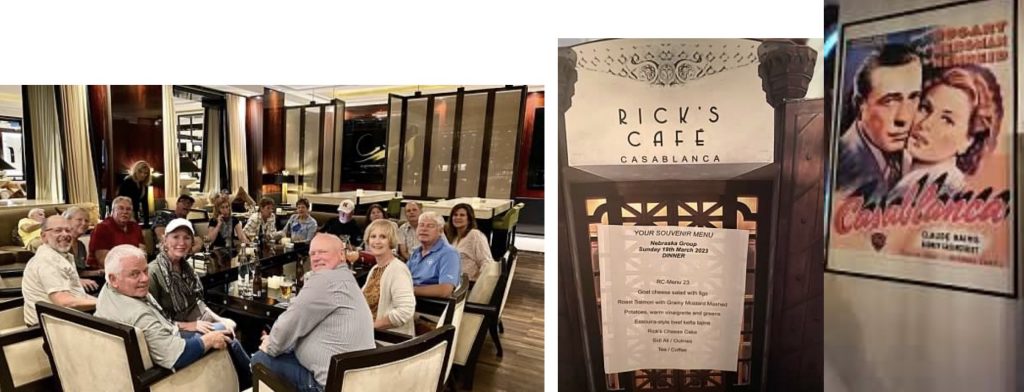
Farewell dinner at Rick’s Cafe. Rick’s Cafe, Casablanca, opened 2004. The place was designed to recreate the bar made famous by Humphrey Bogart and Ingrid Bergman in the movie classic Casablanca.
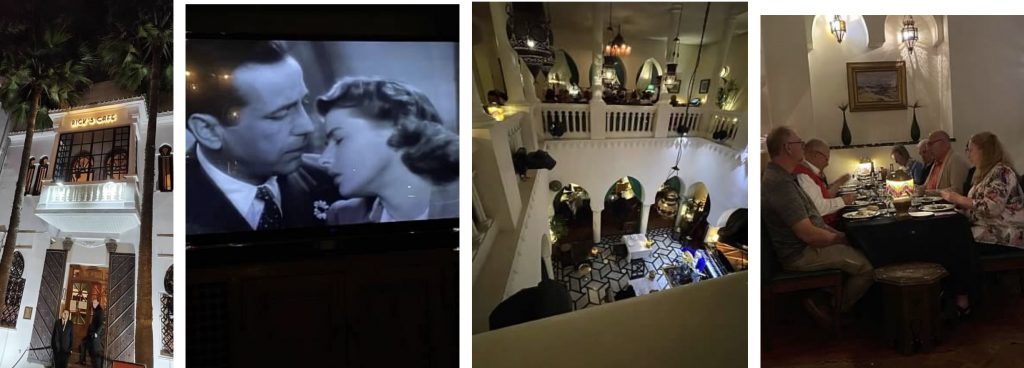
Set in an old courtyard-style mansion built against the walls of the Old Medina of Casablanca, the restaurant – piano bar is filled with architectural and decorative details reminiscent of the film.
Some participated in the 3 day add on to Madrid, Spain, others headed home after our fantastic Moroccan Travel Study.

